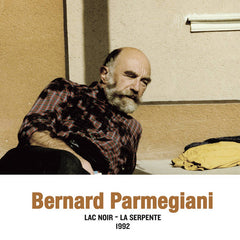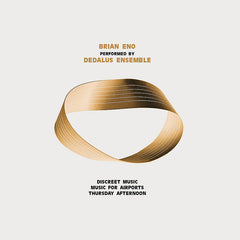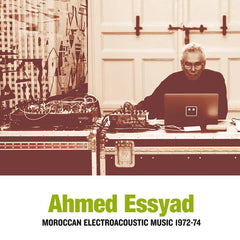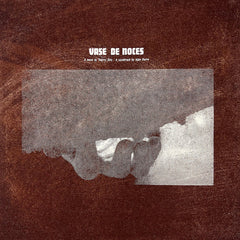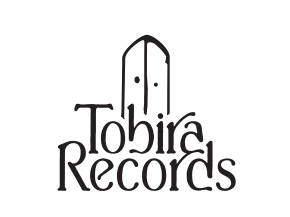Quickview
{"id":8803174646010,"title":"Bernard Parmegiani \/\/ Lac Noir - La Serpente 1992 (Never Released Before) LP","handle":"bernard-parmegiani-lac-noir-la-serpente-1992-never-released-before-lp","description":"\u003cp\u003e\u003cspan\u003eフランスの大御所実験音楽家Bernard Parmegiani(1927-2013)が、2025年5月に\u003c\/span\u003eベルギーの実験レーベルSub Rosaからリリースしたレコードです。\u003c\/p\u003e\n\u003cp\u003e1992年に録音した未発表音源9曲を収録。\u003c\/p\u003e\n\u003cp\u003e\u003ciframe src=\"https:\/\/bandcamp.com\/EmbeddedPlayer\/album=3089741163\/size=large\/bgcol=ffffff\/linkcol=0687f5\/tracklist=false\/artwork=none\/transparent=true\/\" style=\"border: 0; width: 100%; height: 120px;\"\u003e\u003c\/iframe\u003e\u003c\/p\u003e\n\u003cp\u003eレーベルその他作品は\u003ca href=\"https:\/\/tobirarecords.com\/collections\/subro\" style=\"font-family: -apple-system, BlinkMacSystemFont, 'San Francisco', 'Segoe UI', Roboto, 'Helvetica Neue', sans-serif; font-size: 0.875rem;\"\u003eこちら\u003c\/a\u003e \/\/\/ Click \u003ca href=\"https:\/\/tobirarecords.com\/collections\/subro\" style=\"font-family: -apple-system, BlinkMacSystemFont, 'San Francisco', 'Segoe UI', Roboto, 'Helvetica Neue', sans-serif; font-size: 0.875rem;\"\u003ehere\u003c\/a\u003e to see more Sub Rosa Label releases available at Tobira.\u003c\/p\u003e\n\u003cp\u003e-----------------------------------------\u003c\/p\u003e\n\u003cp\u003e12\" black vinyl in gatefold sleeve.\u003cbr\u003e\u003cspan\u003eContains unreleased material composed by Bernard Parmegiani in 1992.\u003c\/span\u003e\u003cbr\u003e\u003c\/p\u003e\n\u003cblockquote\u003e\n\u003cp\u003e\u003cstrong\u003eTracklist\u003c\/strong\u003e:\u003c\/p\u003e\n\u003cp class=\"MsoNormal\"\u003e1. La traversée 07:48\u003cbr\u003e2. La voix 07:47\u003cbr\u003e3. Nature mêlée I 03:50\u003cbr\u003e\u003cspan style=\"font-family: -apple-system, BlinkMacSystemFont, 'San Francisco', 'Segoe UI', Roboto, 'Helvetica Neue', sans-serif; font-size: 0.875rem;\"\u003e4. Nature mêlée II 03:40\u003cbr\u003e\u003c\/span\u003e5. Le cercle 02:39\u003cbr\u003e6. Tsiganie 06:34\u003cbr\u003e7. Rouge et Blanc 02:01\u003cbr\u003e\u003cspan style=\"font-family: -apple-system, BlinkMacSystemFont, 'San Francisco', 'Segoe UI', Roboto, 'Helvetica Neue', sans-serif; font-size: 0.875rem;\"\u003e8. Marchand de cloches 05:01\u003cbr\u003e\u003c\/span\u003e9. La Serpente 11:00\u003c\/p\u003e\n\u003c\/blockquote\u003e\n\u003cp\u003e\u003cspan class=\"bcTruncateMore\"\u003eExtracts from notes by E. Raquin-Lorenzi, via the label:\u003c\/span\u003e\u003c\/p\u003e\n\u003cp\u003e\u003cem\u003e\"Lac Noir - La Serpente is part of Emmanuel Raquin-Lorenzi's Lac Noir, a composite work inspired by a serpentine female creature or 'snake woman' that he saw in Transylvania in 1976, with a total of 33 pieces using various media, 24 by himself and 9 by other artists. All the materials used in Lac Noir were gathered on the land of the snake-woman between 1990 and 1992. The first coordinated broadcast ran from June to October 2019, like a theatrical display of media.\u003c\/em\u003e\u003cbr\u003e\u003cbr\u003e\u003cem\u003eAt the end of May 1992, in Provence, in his Summer studio not far from the Montagne Sainte-Victoire, Bernard Parmegiani played me the first musical moments he had worked on from the sounds he and Christian Zanési had collected in Negreni in October 1990. A few days after this listening session, on 4th June, I wrote him a letter. I didn't mean to take control of what was to become the ninth movement of his composition, but to share with him some of the resonances I had heard in what he had composed, which mingled with my dreams and memories of the Transylvanian snake-woman, and outlined possible concordances with the other pieces underway for Lac Noir.\u003c\/em\u003e\u003cbr\u003e\u003cbr\u003e\u003cem\u003eIn the midst of the garish chaos of the fair and its\u003c\/em\u003e\u003cspan class=\"bcTruncateMore\"\u003e\u003cem\u003e spectacular stunts, there could spread out - still, silent eye of the cyclone - the long waters of a lake. Calm waters. Patches cool but sensitive as skin. Between the waters there flows and ripples, there shows up and dives again a snake-woman born of the still waters. A sweet, good serpent whose song - strange and melodious, sensual, yet already tinged, as if bitten by the black depths, with bitterness; that of prescience, shading it with melancholy - is her very undulation, the rings of which appear, together or in turn, the way translucent veins overlap, slither over one another in a moving braid of metamorphoses.\"\u003c\/em\u003e\u003cbr\u003e\u003c\/span\u003e\u003c\/p\u003e\n\u003cp\u003eArtist : Bernard Parmegiani\u003c\/p\u003e\n\u003cp\u003eLabel : Sub Rosa\u003c\/p\u003e\n\u003cp\u003ecat no : \u003cmeta charset=\"utf-8\"\u003e\u003cspan\u003eSR464V\u003c\/span\u003e\u003c\/p\u003e","published_at":"2025-05-31T09:17:09+09:00","created_at":"2025-05-30T13:06:28+09:00","vendor":"Tobira Records","type":"","tags":["drone","lp","monooto","new","sub rosa"],"price":399300,"price_min":399300,"price_max":399300,"available":true,"price_varies":false,"compare_at_price":null,"compare_at_price_min":0,"compare_at_price_max":0,"compare_at_price_varies":false,"variants":[{"id":47360775651578,"title":"Default Title","option1":"Default Title","option2":null,"option3":null,"sku":"","requires_shipping":true,"taxable":true,"featured_image":null,"available":true,"name":"Bernard Parmegiani \/\/ Lac Noir - La Serpente 1992 (Never Released Before) LP","public_title":null,"options":["Default Title"],"price":399300,"weight":530,"compare_at_price":null,"inventory_management":"shopify","barcode":"5411867334644","requires_selling_plan":false,"selling_plan_allocations":[]}],"images":["\/\/tobirarecords.com\/cdn\/shop\/files\/lac1_eaf36c62-fe5d-4496-b968-c4137fbe5215.jpg?v=1748577844","\/\/tobirarecords.com\/cdn\/shop\/files\/lac2_32803d6a-8f5e-4879-9b5f-3ddf178bf2ca.jpg?v=1748577844","\/\/tobirarecords.com\/cdn\/shop\/files\/lac3_e8b685ff-5582-44fd-862f-2467c96bacb0.jpg?v=1748577845"],"featured_image":"\/\/tobirarecords.com\/cdn\/shop\/files\/lac1_eaf36c62-fe5d-4496-b968-c4137fbe5215.jpg?v=1748577844","options":["Title"],"media":[{"alt":null,"id":36111502901498,"position":1,"preview_image":{"aspect_ratio":1.0,"height":700,"width":700,"src":"\/\/tobirarecords.com\/cdn\/shop\/files\/lac1_eaf36c62-fe5d-4496-b968-c4137fbe5215.jpg?v=1748577844"},"aspect_ratio":1.0,"height":700,"media_type":"image","src":"\/\/tobirarecords.com\/cdn\/shop\/files\/lac1_eaf36c62-fe5d-4496-b968-c4137fbe5215.jpg?v=1748577844","width":700},{"alt":null,"id":36111502934266,"position":2,"preview_image":{"aspect_ratio":0.988,"height":1200,"width":1185,"src":"\/\/tobirarecords.com\/cdn\/shop\/files\/lac2_32803d6a-8f5e-4879-9b5f-3ddf178bf2ca.jpg?v=1748577844"},"aspect_ratio":0.988,"height":1200,"media_type":"image","src":"\/\/tobirarecords.com\/cdn\/shop\/files\/lac2_32803d6a-8f5e-4879-9b5f-3ddf178bf2ca.jpg?v=1748577844","width":1185},{"alt":null,"id":36111502967034,"position":3,"preview_image":{"aspect_ratio":1.013,"height":1185,"width":1200,"src":"\/\/tobirarecords.com\/cdn\/shop\/files\/lac3_e8b685ff-5582-44fd-862f-2467c96bacb0.jpg?v=1748577845"},"aspect_ratio":1.013,"height":1185,"media_type":"image","src":"\/\/tobirarecords.com\/cdn\/shop\/files\/lac3_e8b685ff-5582-44fd-862f-2467c96bacb0.jpg?v=1748577845","width":1200}],"requires_selling_plan":false,"selling_plan_groups":[],"content":"\u003cp\u003e\u003cspan\u003eフランスの大御所実験音楽家Bernard Parmegiani(1927-2013)が、2025年5月に\u003c\/span\u003eベルギーの実験レーベルSub Rosaからリリースしたレコードです。\u003c\/p\u003e\n\u003cp\u003e1992年に録音した未発表音源9曲を収録。\u003c\/p\u003e\n\u003cp\u003e\u003ciframe src=\"https:\/\/bandcamp.com\/EmbeddedPlayer\/album=3089741163\/size=large\/bgcol=ffffff\/linkcol=0687f5\/tracklist=false\/artwork=none\/transparent=true\/\" style=\"border: 0; width: 100%; height: 120px;\"\u003e\u003c\/iframe\u003e\u003c\/p\u003e\n\u003cp\u003eレーベルその他作品は\u003ca href=\"https:\/\/tobirarecords.com\/collections\/subro\" style=\"font-family: -apple-system, BlinkMacSystemFont, 'San Francisco', 'Segoe UI', Roboto, 'Helvetica Neue', sans-serif; font-size: 0.875rem;\"\u003eこちら\u003c\/a\u003e \/\/\/ Click \u003ca href=\"https:\/\/tobirarecords.com\/collections\/subro\" style=\"font-family: -apple-system, BlinkMacSystemFont, 'San Francisco', 'Segoe UI', Roboto, 'Helvetica Neue', sans-serif; font-size: 0.875rem;\"\u003ehere\u003c\/a\u003e to see more Sub Rosa Label releases available at Tobira.\u003c\/p\u003e\n\u003cp\u003e-----------------------------------------\u003c\/p\u003e\n\u003cp\u003e12\" black vinyl in gatefold sleeve.\u003cbr\u003e\u003cspan\u003eContains unreleased material composed by Bernard Parmegiani in 1992.\u003c\/span\u003e\u003cbr\u003e\u003c\/p\u003e\n\u003cblockquote\u003e\n\u003cp\u003e\u003cstrong\u003eTracklist\u003c\/strong\u003e:\u003c\/p\u003e\n\u003cp class=\"MsoNormal\"\u003e1. La traversée 07:48\u003cbr\u003e2. La voix 07:47\u003cbr\u003e3. Nature mêlée I 03:50\u003cbr\u003e\u003cspan style=\"font-family: -apple-system, BlinkMacSystemFont, 'San Francisco', 'Segoe UI', Roboto, 'Helvetica Neue', sans-serif; font-size: 0.875rem;\"\u003e4. Nature mêlée II 03:40\u003cbr\u003e\u003c\/span\u003e5. Le cercle 02:39\u003cbr\u003e6. Tsiganie 06:34\u003cbr\u003e7. Rouge et Blanc 02:01\u003cbr\u003e\u003cspan style=\"font-family: -apple-system, BlinkMacSystemFont, 'San Francisco', 'Segoe UI', Roboto, 'Helvetica Neue', sans-serif; font-size: 0.875rem;\"\u003e8. Marchand de cloches 05:01\u003cbr\u003e\u003c\/span\u003e9. La Serpente 11:00\u003c\/p\u003e\n\u003c\/blockquote\u003e\n\u003cp\u003e\u003cspan class=\"bcTruncateMore\"\u003eExtracts from notes by E. Raquin-Lorenzi, via the label:\u003c\/span\u003e\u003c\/p\u003e\n\u003cp\u003e\u003cem\u003e\"Lac Noir - La Serpente is part of Emmanuel Raquin-Lorenzi's Lac Noir, a composite work inspired by a serpentine female creature or 'snake woman' that he saw in Transylvania in 1976, with a total of 33 pieces using various media, 24 by himself and 9 by other artists. All the materials used in Lac Noir were gathered on the land of the snake-woman between 1990 and 1992. The first coordinated broadcast ran from June to October 2019, like a theatrical display of media.\u003c\/em\u003e\u003cbr\u003e\u003cbr\u003e\u003cem\u003eAt the end of May 1992, in Provence, in his Summer studio not far from the Montagne Sainte-Victoire, Bernard Parmegiani played me the first musical moments he had worked on from the sounds he and Christian Zanési had collected in Negreni in October 1990. A few days after this listening session, on 4th June, I wrote him a letter. I didn't mean to take control of what was to become the ninth movement of his composition, but to share with him some of the resonances I had heard in what he had composed, which mingled with my dreams and memories of the Transylvanian snake-woman, and outlined possible concordances with the other pieces underway for Lac Noir.\u003c\/em\u003e\u003cbr\u003e\u003cbr\u003e\u003cem\u003eIn the midst of the garish chaos of the fair and its\u003c\/em\u003e\u003cspan class=\"bcTruncateMore\"\u003e\u003cem\u003e spectacular stunts, there could spread out - still, silent eye of the cyclone - the long waters of a lake. Calm waters. Patches cool but sensitive as skin. Between the waters there flows and ripples, there shows up and dives again a snake-woman born of the still waters. A sweet, good serpent whose song - strange and melodious, sensual, yet already tinged, as if bitten by the black depths, with bitterness; that of prescience, shading it with melancholy - is her very undulation, the rings of which appear, together or in turn, the way translucent veins overlap, slither over one another in a moving braid of metamorphoses.\"\u003c\/em\u003e\u003cbr\u003e\u003c\/span\u003e\u003c\/p\u003e\n\u003cp\u003eArtist : Bernard Parmegiani\u003c\/p\u003e\n\u003cp\u003eLabel : Sub Rosa\u003c\/p\u003e\n\u003cp\u003ecat no : \u003cmeta charset=\"utf-8\"\u003e\u003cspan\u003eSR464V\u003c\/span\u003e\u003c\/p\u003e"}
